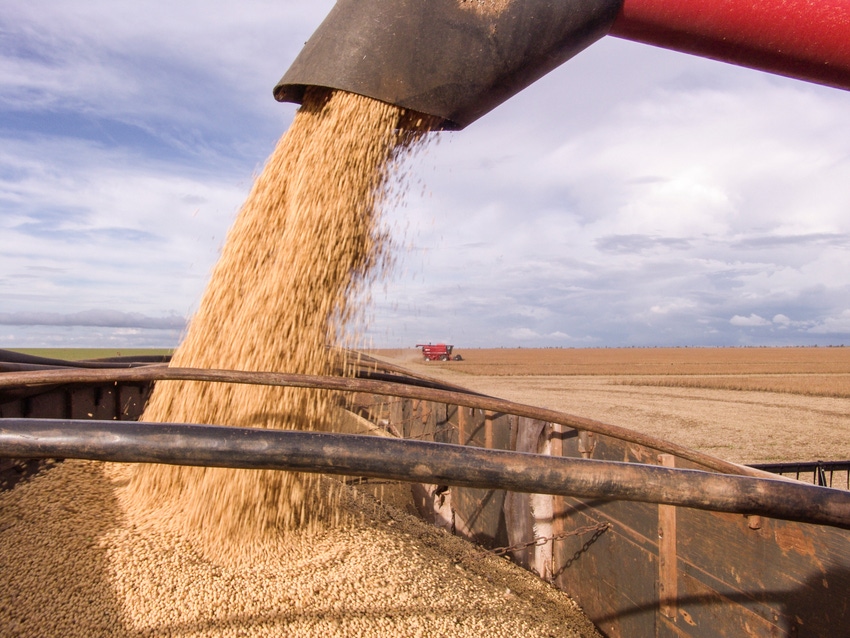Ensiled peas researched for use in animal feed
Goal is to improve feed value of regionally produced feedstuffs such as peas and field beans by fermentation and thermal treatment.
February 12, 2020

The Institute of Agricultural & Nutritional Sciences at Martin Luther University Halle-Wittenberg (MLU) in Germany is currently researching domestic alternatives to soybean products in animal feed as part of the SilaToast project. The project is meant to determine what special handling alternative feedstuffs will require to equal the nutritional value of soybeans.
Soybeans are a popular feedstuff mainly due to a high protein content. However, their cultivation has been criticized in Europe on several grounds, including use of genetically modified seeds, ecological impacts in growing regions and long-distance transport to global markets, MLU said.
The overall environmental footprint of soy has led Germany's Federal Ministry of Agriculture & Food (BMEL) to support research into soy substitutes. BMEL has funded the joint SilaToast project at MLU and the Saxon State Office for Environment, Agriculture & Geology (LfULG), which is testing two native legumes: the pea and the field bean.
"Our main goal is to improve the feed value of regionally produced feedstuffs by fermentation and thermal treatment so they can replace soy protein both quantitatively and qualitatively," said Dr. Olaf Steinhöfel, MLU honorary professor and LfULG's project lead. However, this is not the only motivation.
"Domestic legumes also benefit agriculture, the environment and the climate in multiple ways," according to MLU animal nutrition professor Annette Zeyner. Legumes loosen the soil and store nitrogen from the air, which other plants are incapable of doing, she added.
Peas in particular contain copious amounts of protein and starch, "but at this point, they don't measure up to soy, partly because they contain many so-called anti-nutritive factors," Zeyner explained.
According to MLU, the anti-nutritive problem is relatively easy to solve, as Zeyner's working group has discovered. For one, anti-nutritive factors are largely degraded by normal agricultural ensiling practices. Another method for boosting the legume's nutritional properties, although not yet widely used in combination with ensiling, is heat exposure.
Thermal treatment does more than just further degrade the anti-nutritive factors in peas, MLU said, noting that, in a recent study, Zeyner and collaborator Dr. Martin Bachmann were able to show that thermal treatment also keeps the proteins from being degraded as quickly by ruminal bacteria in cows and other ruminants.
Zeyner said ruminal protein degradation that occurs too soon is problematic for two reasons: (1) a large amount of nitrogen is excreted via the fecal matter and can, thus, enter the groundwater as a nitrate or the air as nitrous oxide, and (2) valuable essential amino acids are lost in the process. These amino acids need to survive the passage to the small intestine to be absorbed there. This is particularly important in order for dairy cows to achieve sufficient production.
"The sticking point is that overheating in turn damages the proteins," Zeyner said. The project, therefore, determined the optimal temperature, length of thermal treatment and silage moisture content.
In laboratory testing, Bachmann was able to show that ensiling and thermal treatment did not affect gas and methane production. Moreover, scanning electron microscope imaging showed that starch molecules were not altered by heating.
LfULG is carrying out the feeding tests with dairy cows. MLU's Merbitz Agricultural & Nutritional Research Center also houses standardized regulatory testing to determine the energy content of feed, using sheep as the model animal. The ensilaged and heat-treated peas can potentially also be used with pigs and poultry, MLU said.
You May Also Like



